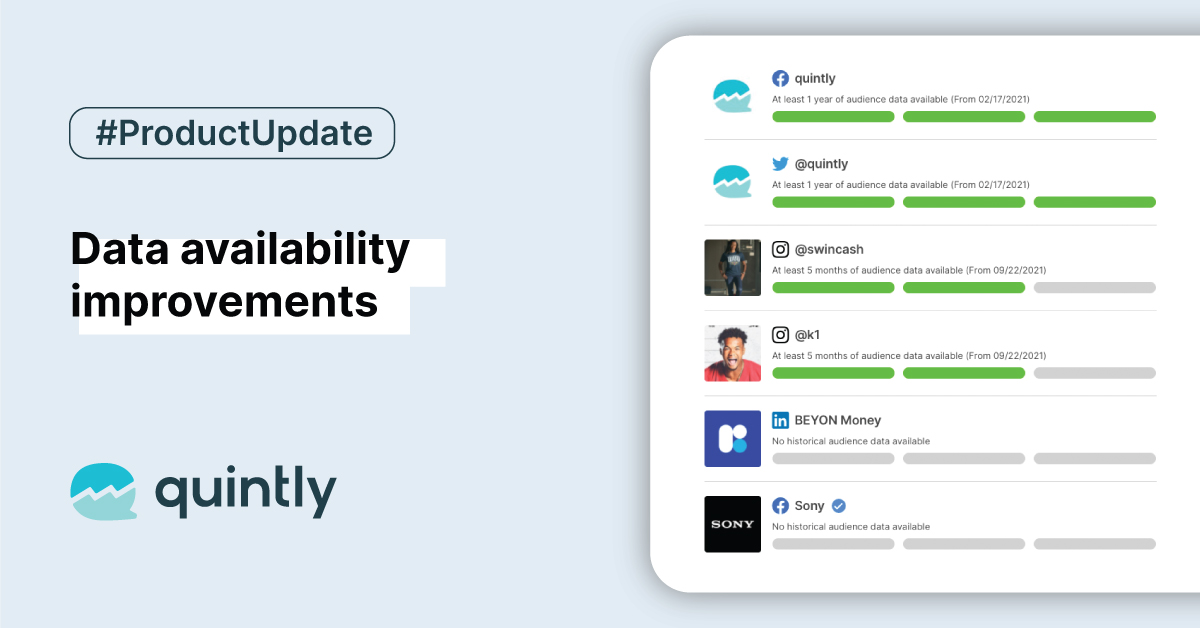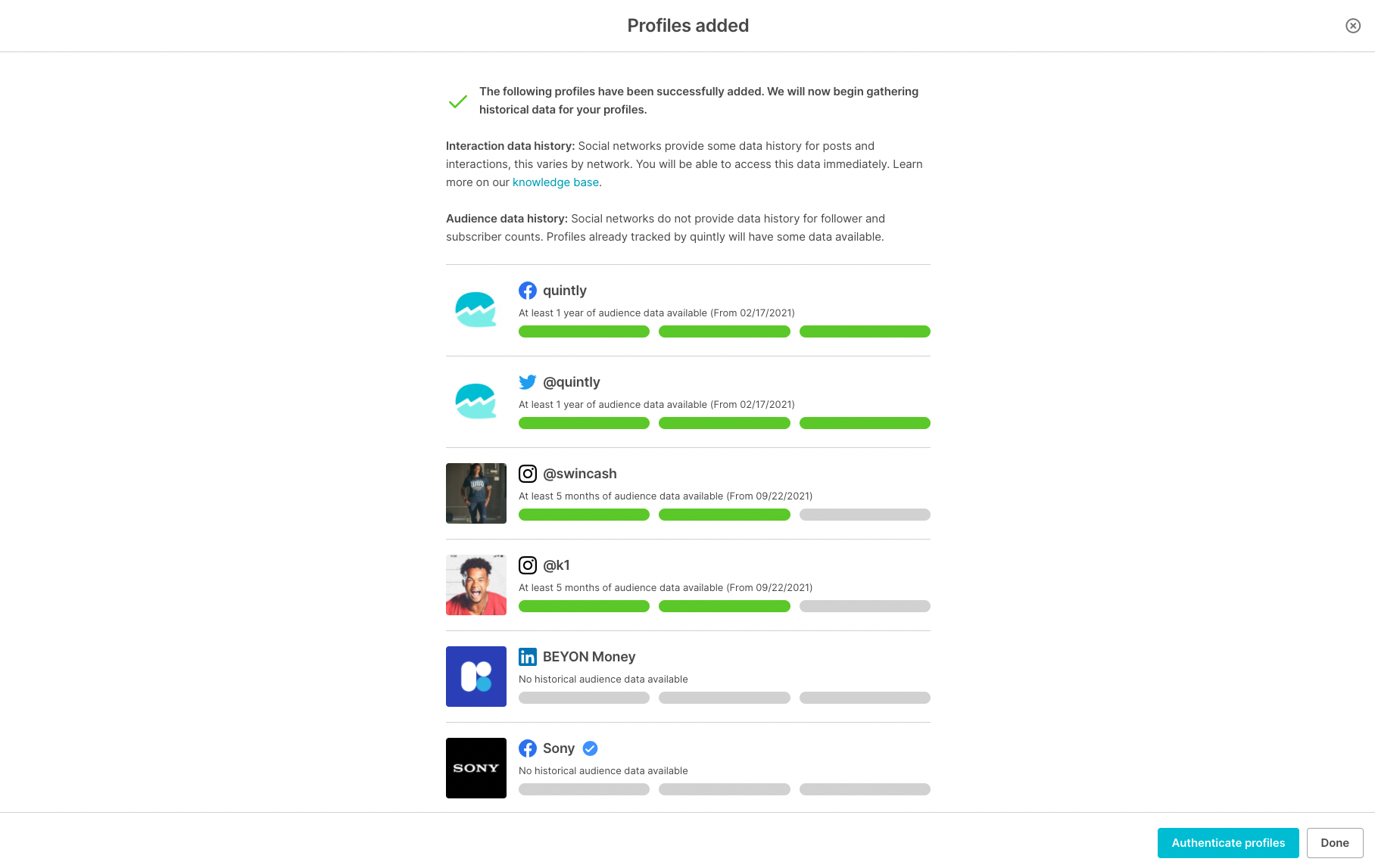
Being one of the most sought-after topics, data availability is crucial for our customers. The most vital part is to know how much historical data is available when adding new profiles. As a part of our data transparency initiative, we are happy to deliver another update helping you understand the availability of historical data within quintly.

Why is it important?
In a nutshell, social networks won't return audience data via API at any specific time. It means that we cannot get the number of followers that the account had, for example, exactly one year ago. Some platforms have even the in-app analytics limited to the last ninety days only (Instagram, for example). To tackle those limits, here at quintly, we take daily snapshots of account vitals and store them as soon as the profile is added.
The challenge
Since the audience data is publicly available to anyone, we also make it available to any other user who starts to track a specific profile. If the account was added before yours, you could benefit from already existing audience data. The challenge is to transparently show our users how much historical data is available.
Transparency at the center
We have decided to create visualization bars to indicate how much information we contain on a specific profile within one full calendar year. This graphical cue will let you quickly identify how much, time-wise, information is available. It’s straightforward, three bars, two colors, four possibilities:
- All gray bars - there is no data available. Tracking starts now
- One green bar (low) - less than six months of data
- Two green bars (medium) - more than six months of continuous data
- Three green bars (high) - more than a year of continuous data
Thanks to those hints, you can quickly determine how much information you will have available from the start, even though you just added the profile. It is worth mentioning that we have also introduced a Migration Assistant, an import tool that will help you move your existing audience data into quintly for historical reasons.

Join the conversation. Leave us a comment below!